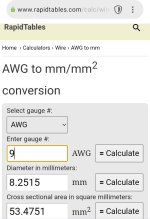9 AWG (American Wire Gauge) is about 3mm (.1144 inch) diameter for the wire itself, jacket size varies considerably.9AWG wire (8 mm diameter) is nonsense inside a home/HiFi speaker cabinet.
8mm wire diameter would be around AWG "0" (1/0) "One Aught", generally used for arc welding, household mains power connections and the like.
That said, 9AWG is still more than needed for any short speaker hook up.
I've used 10AWG for 120 foot (~37meter) 2 ohm speaker runs, and it was on the light side for performance (but heavy to coil up..), but the 14AWG internal cabinet wiring was plenty.
Last edited:
The standards are mm2 and AWG. Diameter in mm is not normally used for conductors and wiring when looking for electrical characteristics
Kind of says itself once you encounter sectoral conductors (triangle" shaped), that is fairly common in larger sizes.
8 AWG about equal to 8mm2 in conductor cross sectional area.
Kind of says itself once you encounter sectoral conductors (triangle" shaped), that is fairly common in larger sizes.
8 AWG about equal to 8mm2 in conductor cross sectional area.
Weird.
I do not use AWG at all (in fact I hate that scale), being a dyed in the wool Metric, so I used an online calculator.
https://www.rapidtables.com/calc/wire/awg-to-mm.html
Which gave me:

WTF?
I trusted it because first I had checked the only AWG value I know by heart, since it's so widely used, 18AWG which is almost exactly 1mm (now that is a nice round number 😄)
It gave me what I expected:

That said, I trust you of course.
Now I am thinking maaayyybbbee I didn't fully reset some earlier calculation or something similar and calculator spit some old number it had in memory.
Well, 3mm is more reasonable, in any case still too thick for my taste.
Thanks
.
I do not use AWG at all (in fact I hate that scale), being a dyed in the wool Metric, so I used an online calculator.
https://www.rapidtables.com/calc/wire/awg-to-mm.html
Which gave me:
WTF?
I trusted it because first I had checked the only AWG value I know by heart, since it's so widely used, 18AWG which is almost exactly 1mm (now that is a nice round number 😄)
It gave me what I expected:
That said, I trust you of course.
Now I am thinking maaayyybbbee I didn't fully reset some earlier calculation or something similar and calculator spit some old number it had in memory.
Well, 3mm is more reasonable, in any case still too thick for my taste.
Thanks
.
Attachments
Same here, but as you can see, that is the first value calculator spit out, so I used it.The standards are mm2 and AWG. Diameter in mm is not normally used for conductors and wiring when looking for electrical characteristics
Oh well 😄
Next time I will use my old trusty slide rule.
Only half kidding, dedicated "electrical" slide rules include AWG conversion and a ton of other useful data 🙂
It's the calculator having a error or something.Now I am thinking maaayyybbbee I didn't fully reset some earlier calculation or something similar and calculator spit some old number it had in memory.
And yeah not used to AWG either,just some mfgs. only retail cables in AWG.
Same site and tables:
The standards are mm2 and AWG.
Yes, the USA standard is AWG while the EU standard is mm².
18 AWG = 0.82 mm²
16 AWG = 1.3 mm²
In the UK, 1.25 mm² is one of the standard speaker cable sizes.
9 AWG would be appropriate for a 50 A continuous load... meaning 50 amps RMS for hours at a time... That would be an impressive woofer that could survive that.9AWG wire (8 mm diameter) is nonsense inside a home/HiFi speaker cabinet.
The difficulty routing and restraining such thick wire inside a cabinet is painful to think about. It just creates a lot of unnecessary problems. Yes, it is nonsense.
https://www.parts-express.com/Audte...kup-Wire-Red-Black-500-ft.-101-262?quantity=1
Lately I have been using this wire, and I like it a lot. 16 ga twisted pair red/black.
j.
Are you hesitant about using the bamboo board? I've used 3/4" thick bamboo board on several speaker builds and like it very much. It machines nicely and can be finished either naturally or with stain. There is a 3-ply type of bamboo with a fairly thick center core that's not, but the outer two parts are pretty thick too. My current build has a solid 3/4" thick bamboo baffle and the rest of the cabinet is 18-mm Baltic birch plywood that I've applied bamboo veneer to.The wood vendor has just told me their Bamboo board isn't really a plywood, it is actually as n annexation of small pieces of bamboo and turned into a larger board.
Paul
A typical multiway speaker will have pcb and crossover components. Which probably has pcb tracks, resistor/s and capacitor/s leads thinner than speaker wire.
For our friends outside of North America, please be aware that SAE wire gage is different than AWG.
I tend to use 16AWG for internal wiring, and 10/12/14 for amp to speaker cables. The cables are sometimes an artistic endeavor as well, but the internal won't be seen.
Are you hesitant about using the bamboo board? I've used 3/4" thick bamboo board on several speaker builds and like it very much. It machines nicely and can be finished either naturally or with stain. There is a 3-ply type of bamboo with a fairly thick center core that's not, but the outer two parts are pretty thick too. My current build has a solid 3/4" thick bamboo baffle and the rest of the cabinet is 18-mm Baltic birch plywood that I've applied bamboo veneer to.
Paul
Here are the bamboo board from the supplier, and they claimed that those are not bamboo plywood but bamboo annexation.Are you hesitant about using the bamboo board? I've used 3/4" thick bamboo board on several speaker builds and like it very much. It machines nicely and can be finished either naturally or with stain. There is a 3-ply type of bamboo with a fairly thick center core that's not, but the outer two parts are pretty thick too. My current build has a solid 3/4" thick bamboo baffle and the rest of the cabinet is 18-mm Baltic birch plywood that I've applied bamboo veneer to.
Paul
Can I have it for speaker cabinet?
Attachments
-
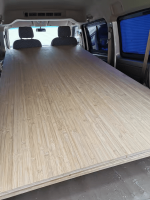 37adfd0bf2fd6f9bc3fe61e24de3f67c (1).png146.6 KB · Views: 50
37adfd0bf2fd6f9bc3fe61e24de3f67c (1).png146.6 KB · Views: 50 -
 4c8dc65e797fbe5a461e51c103520ac4.png165.7 KB · Views: 47
4c8dc65e797fbe5a461e51c103520ac4.png165.7 KB · Views: 47 -
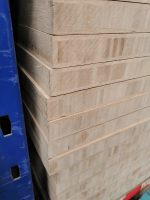 640be18bac245e94cc3412a3e77beb10.png169.6 KB · Views: 49
640be18bac245e94cc3412a3e77beb10.png169.6 KB · Views: 49 -
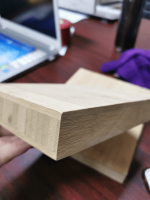 8ed7dad9197a59672bcc427bd3ca28c7.png101.9 KB · Views: 49
8ed7dad9197a59672bcc427bd3ca28c7.png101.9 KB · Views: 49 -
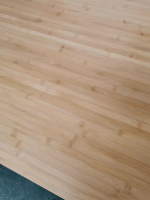 2a53d71156ea80d8c415c641f30c40d4.png155.3 KB · Views: 50
2a53d71156ea80d8c415c641f30c40d4.png155.3 KB · Views: 50 -
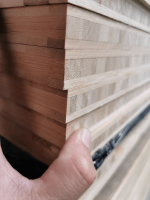 0f55f2f14c24c5131c1caa5551d3ab4f.png141.2 KB · Views: 46
0f55f2f14c24c5131c1caa5551d3ab4f.png141.2 KB · Views: 46
The big measurement for speaker wire should be ohms per foot (or other unit you use to measure wire length). With that you can calculate damping factor (assuming high damping factor from the amp) for a certain length.
Converting wire size to ohms per length will let you calculate the effects of any length of wire.
Converting wire size to ohms per length will let you calculate the effects of any length of wire.
Agree; it's too microscopic to worry about.Ask yourself: that foot of internal wiring is in series with the many yards of voice coil winding and the several meters of speaker cable from amp to speaker.
Would you expect that one foot to be able to remove the veil from your music?
Jan
Only if those caterpillars are fed by left handed blue eyed virgins.Use 10ga solid gold wire with pure silk insulation from the happiest Himalayan caterpillars. It won’t make any difference but you’ll have bragging rights.
I used some very thick cable for my active speakers. It was and remains a pain in the neck to work with. I will be using MUCH slimmer wire next time. I have two types of thick wire and the more flexible one is much nicer to work with. I’m damn sure there is no audible benefit over that short distance.
...those are not bamboo plywood but bamboo annexation. Can I have it for speaker cabinet?
The bamboo amalgamation looks like the blockboard which is commonly made from ordinary wood (see image below).
Blockboard is not recommended for speaker cabinet construction as it often contains voids (empty spaces).
There is a possibility that your bamboo blockboard may also contain voids. You would have to do some investigative surgery on a sample.
I think they have a point.Here are the bamboo board from the supplier, and they claimed that those are not bamboo plywood but bamboo annexation.
Can I have it for speaker cabinet?
Plywood is made out of HUGE (many meters long, up to 5 or 6 meters wide if they want to) very thin (1-2 mm thick) wood sheets "shaven" from huge tree trunks, sandwiched and glued together.
Physically impossible if you start with bamboo.
So only option left is to crush it into larger or smaller bits, I am thinking pencil size at best, and press/glue them together.
IF they call that "plywood" it's an unfortunate choice.
If they aim at that market (I guess they do), they should have called those boards "plywood substitute" or "equivalent".
In fact, the proper name would be "bamboo chipboard", only the word chipboard carries a stigma 🤷🏻
But "aggregation" means the same, so.....
Or they could have called it "bamboo OSB" .... almost as bad.
I now see that Tubenstein already has a thread which includes bamboo board:
https://www.diyaudio.com/community/threads/spruce-wood-for-cabinet.411890/page-2
So, to discuss it further on this cable thread is unnecessary duplication!
https://www.diyaudio.com/community/threads/spruce-wood-for-cabinet.411890/page-2
So, to discuss it further on this cable thread is unnecessary duplication!
- Home
- Loudspeakers
- Multi-Way
- Question about thicker wire size for loudspeaker
